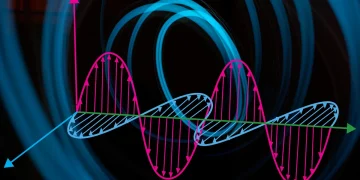In the history, there are individuals who shine like constellations, guiding humanity towards new horizons of knowledge and understanding. Among these luminaries stands Archimedes, a figure whose intellect and innovation have left an indelible mark on the realms of mathematics, physics, and engineering. Born in Syracuse, a Greek city-state, around 287 BC, Archimedes was a polymath whose revolutionary ideas continue to influence and shape the world even centuries after his time.
Archimedes was born in Syracuse, a Greek city-state in Sicily, around 287 BCE. He probably studied in Alexandria, Egypt, where he learned from the famous mathematicians Euclid and Conon. He returned to Syracuse and became a friend and advisor of King Hieron II, who often asked him to solve practical problems and design military machines.
Archimedes was fascinated by geometry and the properties of shapes and solids. He used a method called exhaustion, which involves approximating an area or a volume by using smaller shapes that fit inside or outside it. He also used the concept of infinity and infinitesimals, which are quantities that are infinitely small or large. By using these methods, he was able to prove many theorems and calculate various quantities with remarkable accuracy.
Some of his most famous mathematical achievements are:
- He proved that the area of a circle is equal to pi times the square of its radius, and that the circumference of a circle is equal to 2 times pi times its radius. He also approximated the value of pi to be between 3.1408 and 3.1429 by using polygons with up to 96 sides.
- He proved that the surface area and volume of a sphere are two-thirds of the surface area and volume of its circumscribing cylinder. He was so proud of this discovery that he asked for a sphere and a cylinder to be engraved on his tombstone.
- He proved that the area of an ellipse is equal to pi times the product of its semi-major and semi-minor axes.
- He proved that the area under a parabola is equal to four-thirds of the area of a triangle with the same base and height.
- He calculated the volume of a segment of a paraboloid of revolution by using an ingenious method involving weighing different solids.
- He calculated the volume of a segment of a hyperboloid of revolution by using a similar method.
- He discovered and studied the Archimedean spiral, which is a curve that winds around a fixed point at a constantly increasing distance from it.
- He devised a system for expressing very large numbers by using powers of powers of 10.
Archimedes was also interested in physics and mechanics, especially the principles of statics and hydrostatics. He applied mathematics to physical phenomena and invented many devices and machines based on his understanding of natural laws.
Some of his most famous physical achievements are:
- He discovered the law of the lever, which states that two weights balance each other when they are inversely proportional to their distances from the fulcrum. He famously said, “Give me a place to stand, and I will move the Earth.”
- He discovered the principle of buoyancy, which states that a body immersed in a fluid experiences an upward force equal to the weight of the fluid displaced by it. This principle explains why objects float or sink in water.
- He invented the Archimedes screw, which is a device for lifting water from a lower to a higher level by using a rotating spiral tube. This device is still used today for irrigation and drainage purposes.
- He invented compound pulleys, which are systems of ropes and wheels that multiply the force applied to them. These devices can be used to lift heavy objects with less effort.
- He invented various war machines, such as catapults, cranes, claws, mirrors, and burning glasses, to defend Syracuse from the Roman siege in 213-212 BCE. According to some accounts, he was able to set fire to enemy ships by using mirrors or lenses to concentrate sunlight on them.
Archimedes was a genius who made remarkable contributions to science and mathematics. His works were preserved by his followers and later scholars, who translated them into Arabic and Latin. His ideas inspired many thinkers during the Renaissance and the Scientific Revolution, such as Leonardo da Vinci, Galileo Galilei, Isaac Newton, and Pierre de Fermat. Archimedes is still admired today for his creativity, rigor, and originality.






























